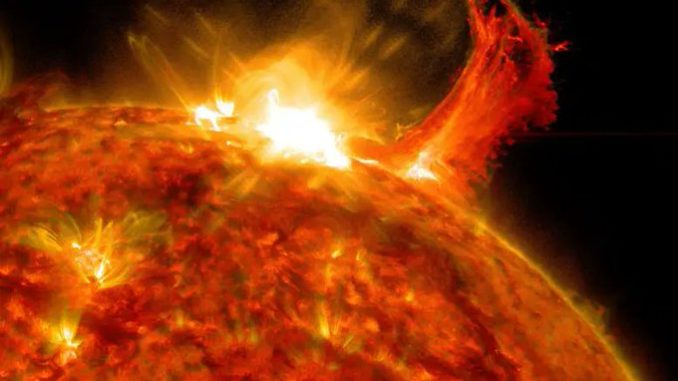
Like a tornado siren for life-threatening storms in America’s heartland, a new computer model that combines artificial intelligence (AI) and NASA satellite data could sound the alarm for dangerous space weather.
The model uses AI to analyze spacecraft measurements of the solar wind (an unrelenting stream of material from the Sun) and predict where an impending solar storm will strike, anywhere on Earth, with 30 minutes of advance warning. This could provide just enough time to prepare for these storms and prevent severe impacts on power grids and other critical infrastructure.
The solar wind is a gusty stream of material that flows from the Sun in all directions, all the time, carrying the Sun’s magnetic field out into space. While it is much less dense than wind on Earth, it is much faster, typically blowing at speeds of one to two million miles per hour. The solar wind is made of charged particles — electrons and ionized atoms — that interact with each other and the Sun’s magnetic field. The extent of the solar wind creates the heliosphere, the Sun’s region of influence within interstellar space.
The Sun constantly sheds solar material into space – both in a steady flow known as the “solar wind,” and in shorter, more energetic bursts from solar eruptions. When this solar material strikes Earth’s magnetic environment (its “magnetosphere”), it sometimes creates so-called geomagnetic storms. The impacts of these magnetic storms can range from mild to extreme, but in a world increasingly dependent on technology, their effects are growing ever more disruptive.
